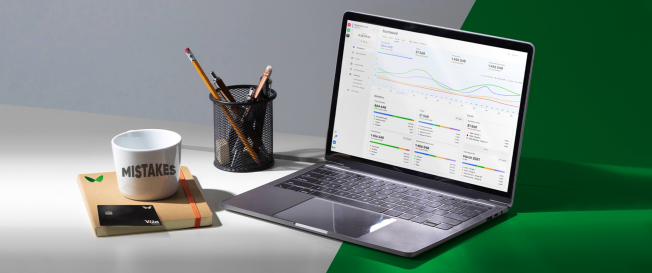The inevitable presence of risk
Every firm faces some level of financial risk, and starting a business is a dangerous endeavour. While some issues can be prepared for, not all financial risks can be managed. For instance, stock market volatility, interest rate changes, and even currency fluctuations might have an unanticipated impact on your company.
Risk management is essential to every company’s long-term goals since it is hard to foresee financial markets accurately. Business owners must anticipate potential risks by creating plans to deal with any unfavourable situations, such as creating a solid financial strategy or switching to prepaid cards from credit cards.
We have outlined and explored six main categories of financial hazards: equity risk, legal risk, operational risk, market risk, and liquidity risk.
Examples of financial risks in business
Credit risk
Credit risk, also known as default risk, results from borrowing money. Almost every firm will eventually need to do this, whether it’s to finance startup costs or to enable the company to develop and flourish. Companies must be sure they can make the payments because breaking the loan’s terms would result in harsh penalties.
A customer’s inability to pay for goods or services can also be referred to as a credit risk. At some time, most firms will have to provide their customers credit, which has risks. Customers who miss payments will suffer repercussions far beyond the time and money needed to retrieve the debt.
A company with investors or shareholders will be negatively impacted by credit risk, which might result in significant interest or loan repayment costs. Debt collection expenses only make this problem worse.
One strategy to reduce credit risk is to use prepaid cards rather than company credit cards.
Market risks
The way a business runs has changed nearly beyond recognition due to the Internet’s growing dominance. Brick-and-mortar establishments suffer as an increasing percentage of customers turn to the Internet to find goods and services. This illustrates market risk. Businesses are vulnerable to shifting market circumstances, which may impact profitability.
For instance, businesses that were early adopters of this digital revolution have prospered and expanded throughout the internet development. However, companies that did not prepare for these changes well in advance have found survival difficult.
Systematic risk is what is referred to as market risk. This risk impacts the entire market instead of merely affecting one company or sector.
Operational risks
Operational risk is the term used to describe the threats encountered daily when running a firm. The phrase refers to various risk concerns, such as poor management, misuse or neglect of cost management cards, and human resources issues. It’s critical to have procedures to address all potential outcomes since even technical equipment failure can influence a company’s financial position.
Model risk and fraud risk are the two main divisions of operational risk. Model risk refers to the company’s growth and marketing strategies, which might result in financial ruin if not thoroughly planned out.
As the name implies, fraud risk is concerned with any dishonest or inept economic action that jeopardizes the integrity of a business. Making your employee expenditure procedure as secure as possible to reduce the possibility of fraud.
Liquidity risks
Effective cash flow management is crucial if a company is to prevent liquidity risk. The phrase describes the degree of risk associated with guaranteeing firm assets can be promptly converted into cash on hand. This is especially concerning for seasonal firms, which frequently see declines in sales during lean periods.
A firm might soon run into serious issues if it cannot pay its employees or get new inventory. In dire situations, this can force the closure of an otherwise successful company, emphasizing the importance of keeping a close eye on cash flow.
Liquidity risk is often divided into two categories. An inadequate number of buyers or sellers might result in a danger to the liquidity of the asset. It also describes the risk of purchasing a product with little to no potential for resale. On the other hand, funding liquidity risk affects how the company manages its daily cash flow.
Legal risks
Legal risk for a business refers to any monetary losses from legal actions and any repercussions your firm may have due to breaking the law. Of course, legal issues demand the expertise of qualified attorneys and related expenses.
The increased emphasis on data and data breaches has been one of the most notable examples of legal risk. You must abide by all data protection rules if you keep any of your customers’ data, which is quite likely. Your company and your clients are in grave danger if you don’t. A data breach has costs in terms of money and reputational harm.
Your duty as an employer to safeguard employees against harm is a more immediate and tangible legal danger that you must consider. In recent years, the introduction of the Coronavirus has brought this need into sharp focus, and during the current COVID-19 pandemic, there are particular standards for risk assessment. If you fail to prepare for these hazards, legal trouble may await your company.
Equity risks
The degree of risk faced by organizations that trade on the stock market is called equity risk. It can be challenging for a corporation to appropriately assess its equity stocks in a turbulent market. A market downturn may be disastrous for a company without proper financial planning.
When creating a bank account for a business, be sure your selected bank offers a high degree of insurance and assistance for specific financial risks, even though certain financial troubles may be beyond your control.
Protection with Wallester
Although we cannot eliminate all risks (no service can), Wallester’s innovative prepaid system provides a reliable and safe method of managing expenses.
Simply fill Wallester prepaid cards with cash, and establish spending caps and other guidelines. This allows you to track how much is being spent and by whom and ensures that your company’s money remains secure because Wallester cards are not linked to a bank account.
Your Wallester plan may be tailored to fit your chosen business method, and you can allocate cards to however many people you think necessary. This is a fantastic method for reducing operational risk and combating fraud. Additionally, since Wallester’s cards don’t require credit, using one won’t increase your credit risk.
Getting started is simple, and you can begin working right away. Switch to Wallester to take charge of your expenditure management and offer yourself more peace of mind.
If you’re interested in learning more about Wallester Businessand how it can benefit your business, feel free to contact us.
We will be happy to assist you.


